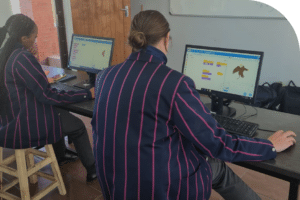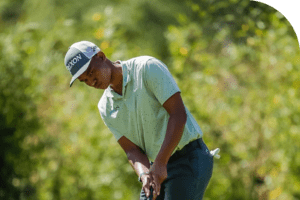BY Bradley Bekker, Evotel’s Head of Brand.

Alleviate poverty through access to information. The key thing about fibre is that it provides people with access to information in a fast and reliable manner, which in turn, assists people to make informed decisions for the better of their lives. Providing fibre internet should be done all in the name of uplifting individuals, communities and subsequently the country at large.
With a proper communications infrastructure, like fibre, we could be able to finally address South Africa’s major issues of poverty and job creation. The root of our widespread poverty and job issues lies in a lack of decent education because such a large percentage of our citizenry lacks access to information and therefore they struggle to make the best choices for their lives and their futures.
As the old adage says: “Knowledge is power,” and without access to information you won’t have the ability to build knowledge and learn. Fibre gives you that access; knowledge and power.
However, we seem to forget about the rest of the communities in small towns, peri-urban and rural areas. As much as education is needed for the youth of our country, so is the education of those that in general lack access to information. Having fibre access at schools is a step up, but connecting whole areas and the entire country, in the end, is what is going to make the difference towards a prosperous future for all – which is what Evotel stands for: Fibre for Everyone.
The haves and have nots
It is imperative to find ways and means to bring fibre internet access to all communities in South Africa and especially the poor. According to Stats SA South Africa had 38.13 million active Internet users in January 2021. Compared to the roughly 60.14 million population, it leaves a large number of citizens (22 million) without any internet access, let alone fibre access. Stats SA indicated that only 1.5 million South African households had fibre and ADSL internet access at home in 2020.
I’m not sure what the current numbers are, but I’m confident that it has increased dramatically over the past two years. Even so, it just shows that the digital divide is a reality and the gap is huge with most of the households without internet access situated in the rural areas and townships of our country.
Bridging this divide is not an easy task and is unfortunately expensive, but it is the only way to ensure that the country develops and prospers as a whole. To bridge the digital divide it is imperative to attract investments in fibre infrastructure to get the entire country covered. This will mean that the private sector will have to do more to make this happen. The government seems to unfortunately not have the means to realise this.
It seems as if the powers that be do understand that the need for digital inclusion for all is paramount to the successful transformation and prosperity of more rural communities. This is evident through the government finally coming to the table and making inroads in setting policies and regulations to speed up the process of getting everyone access to broadband. For instance, the new National Infrastructure Plan (NIP) 2050. These policies, plans and regulations will hopefully increase the investment in fibre infrastructure for townships and rural areas and assist in fibre internet proliferation.
There has been a growth in the number of fibre network operators (FNOs) in the past couple of years, with 38 FNOs competing for business. This should be a clear indication that there is a genuine need for this service and that there are profitable opportunities out there, which should hopefully see investment appetites grow.
The focus of investors should also shift towards rural development and should not only be centred around developments in the already affluent areas where the money already is. Investors should now be targeting those less affluent areas to uplift and develop the currently disadvantaged communities and bring those areas on par with the metropoles. This is how the gap between the haves and have nots will be decreased and we will finally bridge the digital divide.
Real change
Real change can only be achieved by alleviating inequality and poverty. Infrastructure investments and addressing socio-economic challenges, such as providing fibre internet to those who are currently without it, is what is needed. This will lead to true empowerment of the disadvantaged and we will experience greater economic growth and prosperity across the country again.
There are several advantages and opportunities to explore across multiple sectors when more South Africans are connected via a fast and reliable fibre internet connection.
For consumers, this means access to new forms of convenience tied to entertainment, communication, commerce, and education, which is the case in large cities, like Johannesburg, Cape Town and Durban. Take for instance the growth in e-commerce and the development of online shopping and home delivery services in the past two years. This was possible because of fast internet broadband access during the height of lockdown restrictions.
For businesses, increased fibre access means access to more prospective clients and the expansion of product and service offerings, which leads to greater economic growth and more economic stability.
Including small towns and more rural areas in the development and providing access to fibre, the internet can only be beneficial in terms of overall growth opportunities. And, because of the increased access to information and services, South Africa’s GDP figures will also see better days.
If it took a worldwide pandemic to act as a catalyst for this growth and change to happen, what gross catalyst would it take to see this kind of speedy development happen in rural South Africa? Increased fibre infrastructure installations in rural areas will undoubtedly contribute to seeing this change happen quicker.
Without access to information and not being able to make informed decisions, which fibre internet enables, you are basically taking a few steps backwards whilst the world around you continues to step forward towards continued development and growth.
As a company, Evotel places a huge value on uplifting communities and education is a big driver for the company. We vow to provide all the schools that fall under our network area with free fibre to connect learners to the internet and give them access to information to have a more in-depth educational experience to better themselves and transfer that knowledge to their communities.
Fibre access broadens people’s scope of learning due to the access to information.
Fibre internet has a positive impact on both children and adults’ education and learning in numerous ways. For students it means being able to download homework assignments quickly, upload papers, connect with their classmates, peers and teachers and allows them to do more in-depth research on projects.
For adults it offers the ability to increase their knowledge of socio-politics and economics affecting their immediate surroundings, allowing them to make more informed decisions to be beneficial to their circumstances. Adults will also have the ability to connect with peers to share thoughts, ideas and information over a larger area – people in other far-off communities that struggle with the same issues – than simply with their neighbours. Through these connections they can work together, share knowledge and learn from each other to find solutions to their specific problems.
The online schooling environment has also proven to increase collaboration and teamwork amongst students, which is essential in today’s world, especially in a world where people are not bound to an office any longer. Online collaboration is a necessity, not only in a work environment, but also in a social community environment and fibre internet access makes this possible and best of all, in near real-time.
Fibre internet connections increase the levels of overall education in our country, which in turn enables individuals to create opportunities for themselves and climb out of the dark hole of poverty. With fibre and the access to information people are driven to create their own employment and to become self-sustainable if there are no jobs available. Fibre can thus be seen as a possible answer to the country’s large unemployment figures, which would be beneficial to all.
The challenge right now
The toughest hurdle to overcome in the roll-out of fibre nationwide is to increase investments in fibre infrastructure in areas that at a quick glance don’t seem gainful but are.
To ensure that the most rural areas of South Africa are reached, thousands of kilometres of fibre cables will have to be installed and that costs money. On top of that, a single fibre line to an area is not going to cut it – and backhaul infrastructure is also needed to ensure constant connectivity.
Even though the cost of fibre has over the years come down to be more affordable it is by no means cheap. Getting investors’ to buy in and showing that there is a market for fibre in rural areas – which there clearly is – is the main challenge.
In the greater scheme of things, investing in fibre infrastructure across all regions and rural areas can only lead to positive results. We have seen this happen in the smaller out of the way towns, like Upington and Kathu in the Northern Cape, where we have installed fibre. There is growth, development and prosperity for individuals, communities, businesses and South Africa as a whole.



